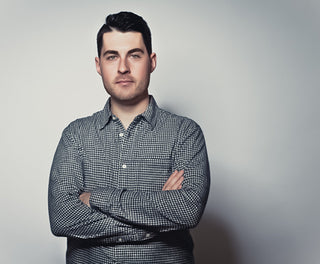I always thought of myself as a pretty knowledgeable dude when it came to shoes, but Brett Golliff’s affinity for footwear and problem solving reaches heights I don’t think I’ve ever really thought were possible. So, when he coins himself a “designer, blogger and footwear extraordinaire,” it’s quite literally what he is.
Although officially a Color & Trim Lead Designer for Chevrolet Performance at iconic American carmaker General Motors, Brett’s rise in the ranks has come on the back of an unlikely journey through his own interpretation of footwear design. Exceeding the expectations of what a product of rural Indiana should be, the midwest talent has found a way to achieve success in a corporate setting, while also realizing a personal fulfillment with his own online journal, editorial contributions to companies like Finishline and Complex, and countless consulting projects for various leading footwear companies in the industry.
I’m forever intrigued by people fueled with unrelenting passion, who are confident yet humble, and are always willing to share their thoughts and insights with others. One of the most savvy individuals I’ve had the pleasure of knowing, Brett’s limitless imagination is something to really marvel at and truly appreciate. I caught up with the Detroit-based creative the other day for a conversation about the current state of affairs within footwear media, his thoughts on the definition of design and how a kid from the farmland met his goals on the big stage.
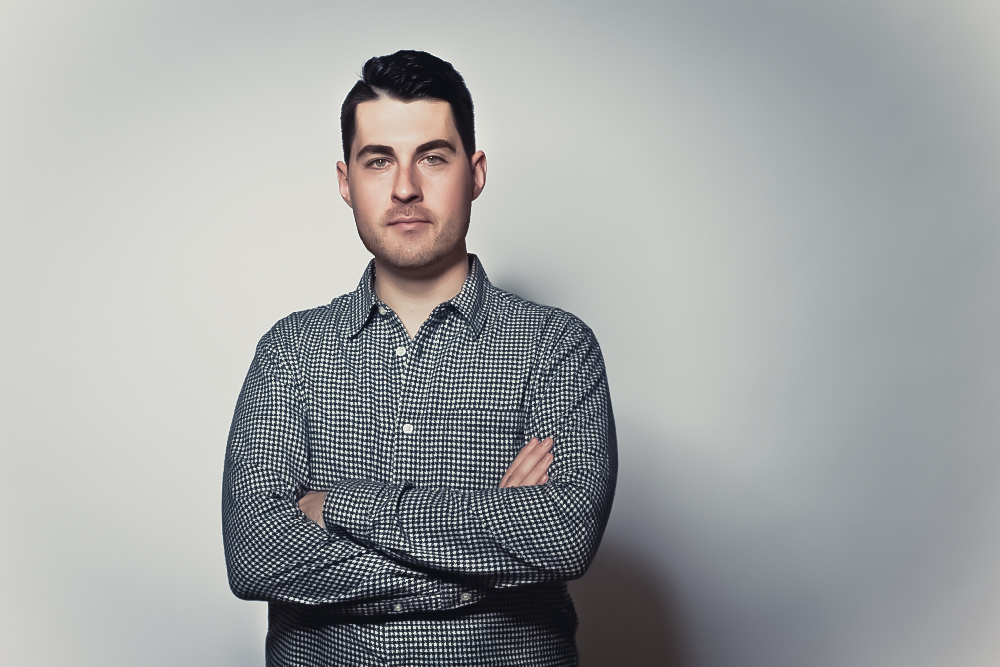
Designer and footwear guru Brett Golliff
People are quick to coin somebody a designer these days, whether it’s in footwear, apparel, or whatever. But what do you distinguish – especially in footwear – somebody that’s coming up with color ways? Would you classify them a designer? Who do you classify a designer?
That’s a really good question. Because of the Internet, designing has really changed. There’s kind of this different love affair of what design was when I got into it. I graduated from college in ’07 and I think I graduated with a pretty standard degree in industrial design. At that time, industrial design was focused on parts and bringing everything together. The manufacturing process and telling a beautiful story through that process. So whether that be a shoe, a car, a phone, whatever you want it to be, it was all about making something aesthetically pleasing, but still have a high amount of function to it.
I don’t know if it’s solely because of the Internet, retro mentality, or simplistic patterns, or whatever it may be – right now, design has become such a color-based story. In a way, I don’t think it’s design, but it still takes a creative person to do it. I don’t think it’s design in the sense that I’ve learned design. What I think design is, is making something that has form and high function. Like, “Here’s this beautiful piece that’s really kind of helping you” – and speaking solely off athletic footwear because I believe that’s what we all have. Whether they’re retro Jordans or not, it was still around athletic footwear. That has to have a function to it.
So just having this idea that you’re putting a beautiful color on something doesn’t speak to me. But when you go and do a really original thought behind it, not anybody can just come up with that. So I think it’s a balance. It is design, but it’s just not design in the sense that I grew up on.
When you’re designing something, when you’re coming up with an idea, what’s your foundation? Do you start off with problem solving, do you start off with a story? How do you usually start when you begin a design?
I’ve always been very inspired by the material that I’m using. I don’t know that I was that good at it when I was younger, but as I get older and go through the design process, I truly do think it’s a very mature approach. The reason I say that is it’s very easy to draw something that’s unique and cool. It’s another thing to have a material that makes it look really, really cool and really great.
Learning to master how to use material is an art in its own way. So a lot of times I come across a material and I’m like, “Well, what if we do it this way,” or, “This is going to advance this process which is going to move this footwear or product to a whole new level that it’s never been able to do. A lot of the times it keeps it lighter, more structurally sound, [and] increases not just cost but it will also help make things more efficient so you can still cut out costs.”
I think it’s a lot of those things that really inspire me. From an aesthetic standpoint, I really like stuff that kind of punches you in the face. If you have this beautiful material like a carbon fiber… it could be concrete, it can be whatever material you want it to be. Celebrate that material. I never try to hide whatever the hero of the design is – I want it to be this bold exposure of what it can be.
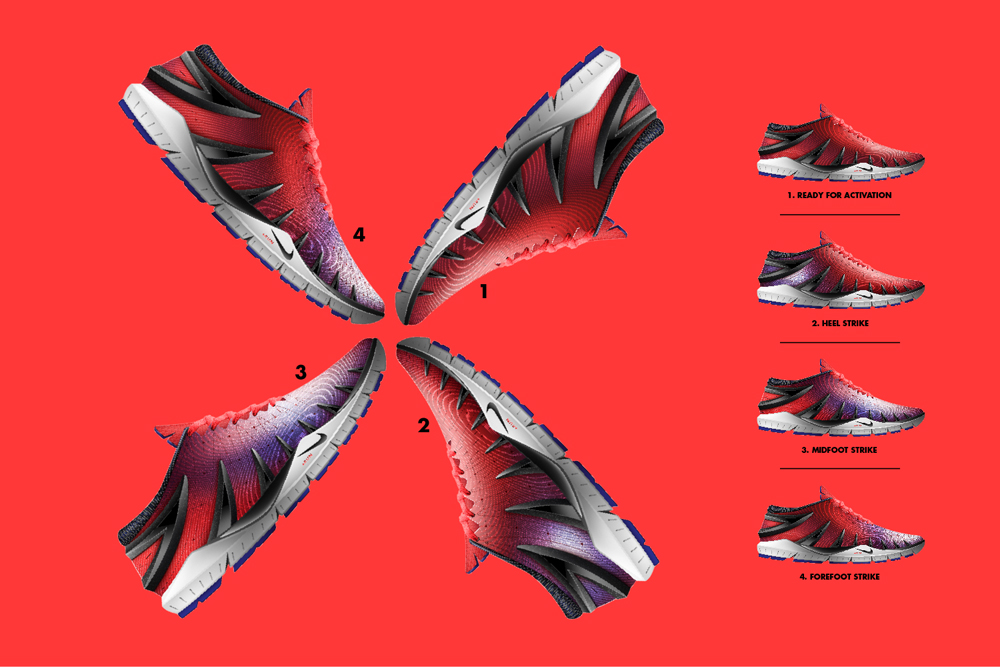
A design rendering forecasting the next generation of Nike+ technology
Can you talk about your start, as far as the forums/blogs go, and that community? How did that help you get to where you’re at now? Do you think they’ve lost some luster over time or are they still influential in your eyes, as much as they were back then?
I started [blogging about footwear] in the winter of 2009. I’ll be 100% honest, I started it as a way of growing myself professionally. It wasn’t so much of a, “Hey, I’m gonna educate people,” or “I’m gonna bring light to what I’m trying to do.” It was really about getting me to grow professionally and advertise work that I had done. I didn’t feel like I was growing quickly enough within my own career at the time. So I started looking for an outside way to do it. Now the reason why I kind of did that at the beginning was that I didn’t realize what it would open up to me. I didn’t realize the education that I had and the knowledge that I had would give me a very original voice to a lot of this footwear blogging. It was a happy coincidence.
I’ve been a member of Nike Talk since 1999. I don’t know if that’s exactly when it started but it’s roughly when it started. So I followed that ever since I was a freshman or sophomore in high school. There was a site called Kicksguide back in the day and they had monthly design competitions. That was really where I started. Okay, I can put my designs online and see what people think and not just get a reaction from my friends, but get a global reaction and really understand what other people are thinking and what’s going into this. It would really give me a sense of where my skill level needed to be on top of that.
I won Design of the Year in 2007 for a shoe that I did, [and] it was just my version of a Foamposite basically. Doing that really opened my channels up by speaking to many different people. From there, I got my footwear job at New Balance. I kind of stopped doing the online side of things but I kept following it. Then in the winter of 2009, I started blogging and it took off. I just planned on it being a side thing that I was going to do every once in awhile. It’s funny, I was going through it the other day: In 2009, I literally came out with 42 blog posts. Not that that’s a lot, but that’s almost every week for a year of talking about footwear in a unique way; not just press releases. I think one of the mistakes I made when I was doing that blogging stuff was that I didn’t have much of a social media output. I didn’t have Twitter until 2012, I didn’t do Instagram until last year. So I never really built a big following, but its slowly started getting passed through the industry. And once that started happening I started getting hit up by actual shoe companies that gave me the opportunity to really hone in on stuff.
Once I left New Balance, I went to General Motors where I was doing cars, they really embraced me doing the blogging. They thought that it was a really unique thing and as long as it didn’t interfere with work life, they really loved that I did it. I’ve really been able to do so much more once I’ve been working outside of the footwear industry. It’s been fun, it’s a good mix. The answer to the second part of your question, has it changed? I would say it’s changed dramatically. When you look at it even from when I started in 2009, there wasn’t a whole lot of people doing it. Some of your bigger sites like Hypebeast, like Highsnobiety – you have your core that’s still here today. But now everybody’s looking for somebody to have a real opinion on stuff. Some of that’s good and some of that’s bad. It’s good when someone can offer a real opinion that adds to the conversation, but it’s bad when somebody’s offering an opinion just to have an opinion. You don’t always have to say something. Sometimes silence is golden, and I think that that is lacking hard in the footwear media side of things right now.
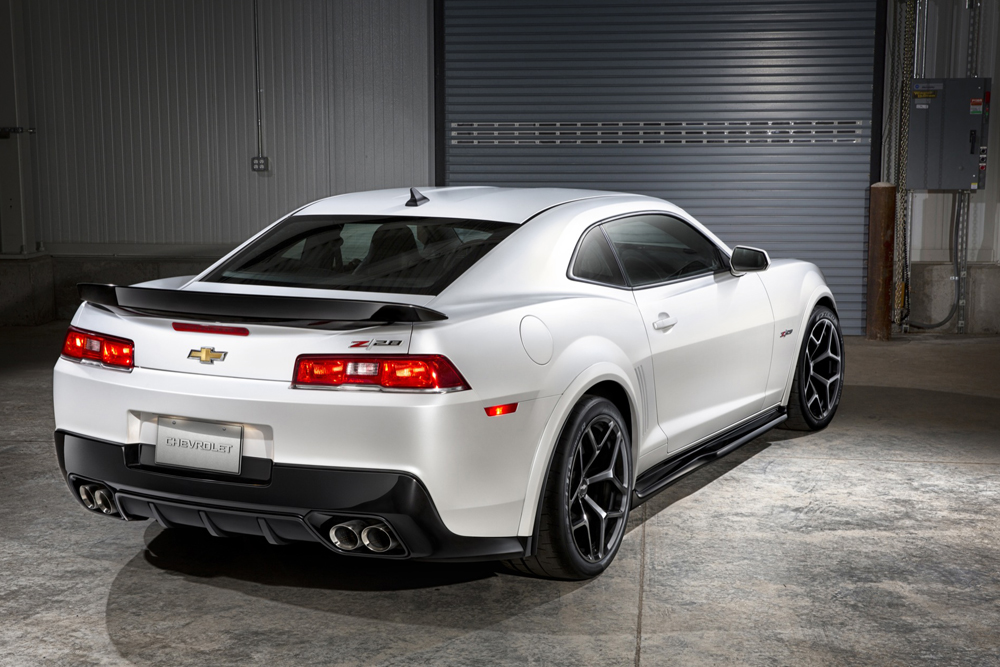
Brett’s work on the color and trim of the 2014 Chevrolet Camaro Z28
People are just scared to have a real opinion. One thing I always see is – this is from experience – someone will cover a shoe and they’ll write in a favorable review about it, just because they don’t want to look bad in front of the brand – but after they’re done, their thoughts may not be true to that review.
I think it’s two things. I don’t want to call it education by any means, but there’s a level of knowledge that some people have and don’t have. Sometimes that comes with maturity. And what I mean by maturity is not being immature about a subject, but more along the lines of you’re inexperienced with the subject. When you’re engulfed in it, you know it. You know how to compare and contrast because you’ve been around it for so long. Right now, you have a lot of people that are just hating stuff to hate, and I think that comes from, A. It’s easier to do it from behind a keyboard, but B. It just comes from not fully grasping and understanding what it is. It always amazes me. Lately I’ve been doing these retro features where I go back and really break down why retro product was really created the way it was. Because originally a Foamposite was created to be worn as the best basketball shoes on the market for Penny Hardaway to play basketball in. It wasn’t created to just be this bold look that everybody falls in love with. Obviously that happened and it helped, but it was originally trying to be a functional tool.
So I’m trying to educate people on that. Every time I do something like that, I get some of the most ignorant comments like, “Penny Hardaway sucks!” Or, “That shoe is irrelevant, go buy a Jordan.” Just stuff like that where it’s like, “You’re not adding to the conversation, so what are you trying to do?” I sit there and I think, is it because they can say hateful things and they want to? Like, they’re just having fun? Or is it simply because they don’t know enough about the product and they don’t care to know enough about the product. It’s this weird battle I have all the time with that stuff.
Who do you think you can really blame for that? The Internet or people that don’t really have the attention span to educate themselves? Or do you think it’s just a lack of knowledgeable people not sharing their thoughts enough?
I think it’s both. We live in a world where we have access to so much information and yet so many people don’t take advantage of that access. I feel like now more than ever ignorance is bliss in a higher way because so many people are willing to let someone else tell them the answer. So as opposed to going and finding out the information on your own, because the answers are still out there, they just let somebody else tell them what it is. Generally, if you’re not going to the right source, you’re going to be getting bad information.
It always amazes me… I just love talking to people about shoes. If I’m in an airport and I see somebody wearing Jordan 3’s, for the most part, they’re in the know. So I’ll talk to them and be like, “Yo, why do you have those? What do you like about them? Why do you go with the Jordan 3’s?” Hopefully somebody’s going to tell me that they loved Michael Jordan in ’87 and ’88 when he won the MVP at the All-Star Game, when he was the MVP, when he averaged 37 points a season, but that never happens. I feel like I’m the only person that thinks that [laughs]. Usually they’ll just tell me they love classic Jordans. But then I start digging deeper: “Hey, where do you get your news from on your shoes? Which site?” And you hear them say these random websites that I’ve never even heard of. I’ve been a part of the footwear industry forever. So for them to say a site that I don’t know about always amazes me. I’ll go and check the site and its chock full of fake Jordans and just bad information. And here’s a kid that has one of the most iconic shoes in footwear history and his information is coming from the most fake place possible. That’s something that always amazes. I don’t know if it’s an uneducated level or if it’s just too much information where too many people can have opinions and people don’t know how to finalize information. I don’t know, it’s a weird scenario.
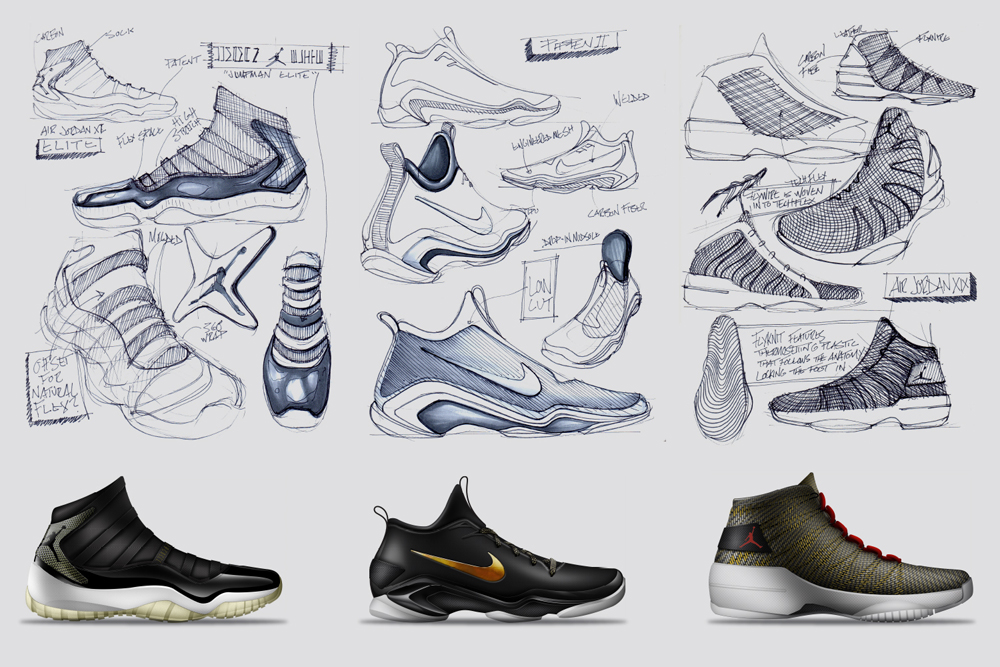
A re-imagining of iconic Nike silhouettes in “Elite” versions
Growing up I would read about sneakers through books and magazines and so many of these iconic silhouettes were inspired by automotive design. A couple that come to mind is the the Jordan XIV and Kobe’s adidas line, which was inspired by Audi. What do you think these two fields share when it comes to footwear designers finding inspiration in cars?
I think it’s two things: If you have industrial design or some sort of creative art design degree, you all tend to be inspired and you all tend to look at very similar things. You’re inspired by a lot of the same ideas and concepts. And a lot of the manufacturing processes are very similar, unless they’re on a larger scale.
But I think the main thing that I always try to equate to is, no matter what you’re doing, whether it’s a running shoe, basketball shoe, or if you’re doing a Corvette, a Camaro, or an SUV, everything wants to look amazing, it wants to look beautiful and inspiring. But most importantly, it wants to look like it’s moving – like it’s going fast. I always think that’s the number one thing that ties those two together. You look at a Corvette, all of those lines are moving to the front, they all look like they’re going 200 miles per hour when they’re sitting in a parking lot. Go look at a shoe at any retail store, go pick up the Flyknit Racer, for example. Look at how pointy that silhouette is and how it leans right down to the toe and how it’s narrow and slim. All the lines are moving forward, making you look like you’re going to go as fast as you possibly can in that shoe. So I think there’s a similar aesthetic that’s driving the emotional impact for it’s consumer.
In your keynote, you mentioned there might only be 300 footwear designers in the world. For someone who wants to go down that path, which may seem like a daunting task, what would be one piece of advice you could offer?
I actually do my best to answer every person that asks me that question. I have a whole inbox full of people just asking me how to get into footwear. The number one thing I tell them is, “Your passion is going to take you as far as you want it to take you.” You’re going to hit road blocks no matter what. I truly believe in design it doesn’t matter how you create your stuff. You can draw, you can paint, you can sculpt, you can do whatever you want. Figure out a way to get your ideas out and then start practicing it and mastering it. Always be willing to open stuff up. I know people that don’t have college degrees that are thriving in the footwear industry, I know people that just have a basic graphic design degree that are designing some of the best Jordans on the planet. I know people that were literally painters and are now designing shoes full-time.
The creative outlet is the creative outlet, so don’t let yourself think that you have to follow any one person’s path because their path was what got them there. What’s going to get you there is your own path and you have to be willing to follow that. If you want a simple day-to-day routine I’m not sure that you need to go home and just be drawing shoes all the time, you should be practicing occasionally but don’t feel like it’s a math equation like, “Oh, I did 5,000 shoe sketches in the last month I’m definitely going to get a job now.” It’s not like that. It’s just making sure that you’re creatively thinking and aspiring to take yourself further. I believe you can apply that to anything, not just shoes. But making sure that your hustle adds up to where your in is. It’s not a dream, it’s a goal, make it a goal and go do it.

Brett was the lead on color and trim for the award-winning Corvette Stringray
As a kid, I was always really independent and liked to find solutions to problems on my own. Sometimes it was to a fault and I’d make my life tougher than it should have been, but doing it my way [creatively] has always been a key to happiness. My folks didn’t really understand it but in a way they went along with it. You obviously started drawing at a young age, were your parents always supportive of you being an artist?
I grew up in a very small town in Indiana. Literally the population right now is 7,500 people. It’s a farming, working class community. I was the only person that really listened to Dr. Dre’s The Chronic, and was more into hip-hop than anybody else. Everything about me was a 180 of what Angola, Indiana should be. I’m not going to say that my parents were art geniuses or were just the most creative people on the planet, because they weren’t. My dad worked in a factory, my mom worked in a factory and now at a day care, working class level. The one thing that they did for me that I can never thank them enough for was simply embrace what I liked doing. My mom saw from a very young age that I loved painting. My grandparents lived on the lake and anytime we’d go everyone would swim and I’d be inside drawing; literally all I was doing. Things from tractors to monster trucks to Ninja Turtles – and at the young age of four my mom put me in private art lessons, and not to say that I was going to Juilliard or anything like that – I was going to a lady that my mom was friends with that was really good at making craft art. It was enough to give me a good foundation.
I did that until I was about 14 in high school and those art lessons I did, paint to sketching to water colors, oil paintings, acrylics, I ran the gambit. Pretty much all I did was draw Jordan’s, I won’t lie about that. When I got into high school, my art teacher, her husband was in the automotive industry and because of that he kind of travelled around the world doing art because of his job. So she lived in Italy for four years. My point being that she had way more influence on me – she just embraced the hell out of what I wanted to do. My freshman year I found out about Nike Talk – actually SLAM put out this 100% MJ issue and they had an interview with Tinker [Hatfield] in it. That was the first time I was like you can draw shoes for a living! It made me start researching. While I was in high school I took over 22 high school art credits and I didn’t really realize how special that was until I went to to College for Creative Studies, which is solely dedicated to art. I had friends that went there, literally dedicated their whole lives to going to an expensive art school and they had only taken one high school art class. Not that I was judging, but it amazed me that I had 22 and was coming from such a small community.
I was lucky that the community saw it as important and kept it in their program. I got lucky that I had people who wanted to support me and wanted to see me succeed. No matter what my mom was going to make sure to get me into a college. This was her way of doing it, I got lucky that I wasn’t just going to college to get a degree, I was going to do something that was going to be fulfilling at the same time.
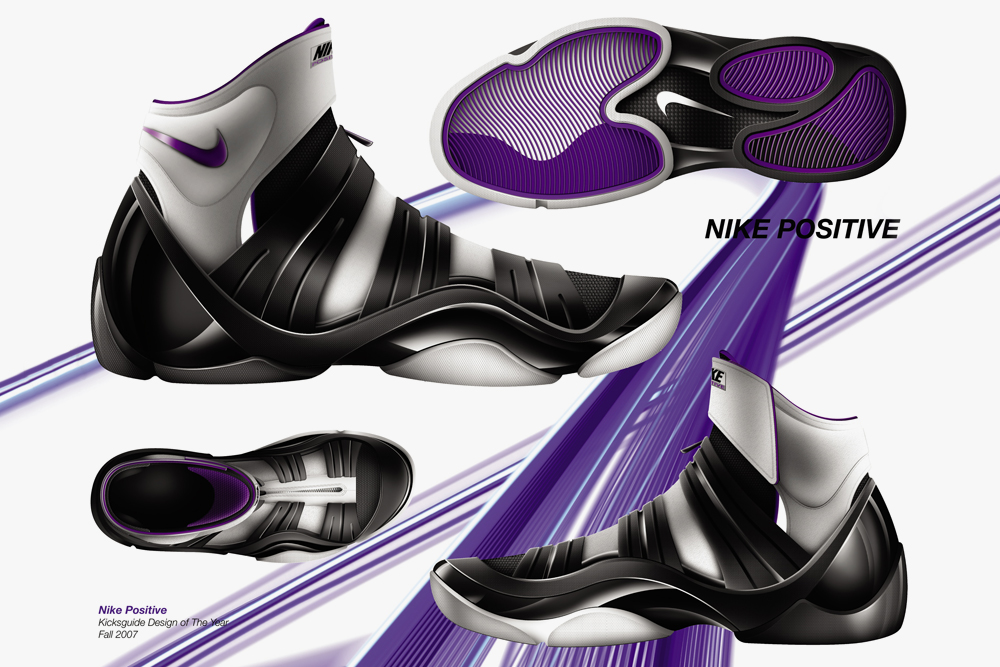
Nike Positive rending that won design of the year at Kicksguide 2007
How important has it been for you to be able to still work within footwear even though you’re full-time at General Motors?
It’s highly important to me. I think a lot of design and just art in general is about finding out who you are as a person. That’s really the only way you’re going to create really great stuff is once you know who you are and what your values are and what you bring to the world. I think a lot of it’s just having self awareness. I’m not good at [producing] mediocre content. To me that’s worse than any four letter word. Intent is just saying, “Fuck.” The reason I say that is I can’t imagine coming home and just sitting there and watching TV and doing nothing. I love spending time with my family, and I will always do that, but it’s all about the hustle for me. I love going through the struggle of seeing the end product come to life. And I love communicating in different ways.
Obviously my skill in life is drawing and sketching and being creative on that front, but the blogging to me is just as creative and artful as that is because it’s another outlet for me to get what’s in my mind out. I treat it like I’m a writer, I can’t say I call myself one, but I think of myself as one when I’m doing it. I want it to come out as high level as possible. I think it’s those ambitions that help keep me motivated. On top of that they all tend to overlap in one shape or form. What I’m working on on one project totally influences another. It helps me to get that creative thought out and once I’ve executed it on one thing I’m like, “Oh, but it would be so much better on this other thing. Let’s go over here and see how this works.” It’s a constant circle, man.
::
Brett has kindly made himself available for any readers of this piece to answer specific questions you may have, in terms footwear design or following your path in the world of arts. He can be reached at: bgolliff@gmail.com.

